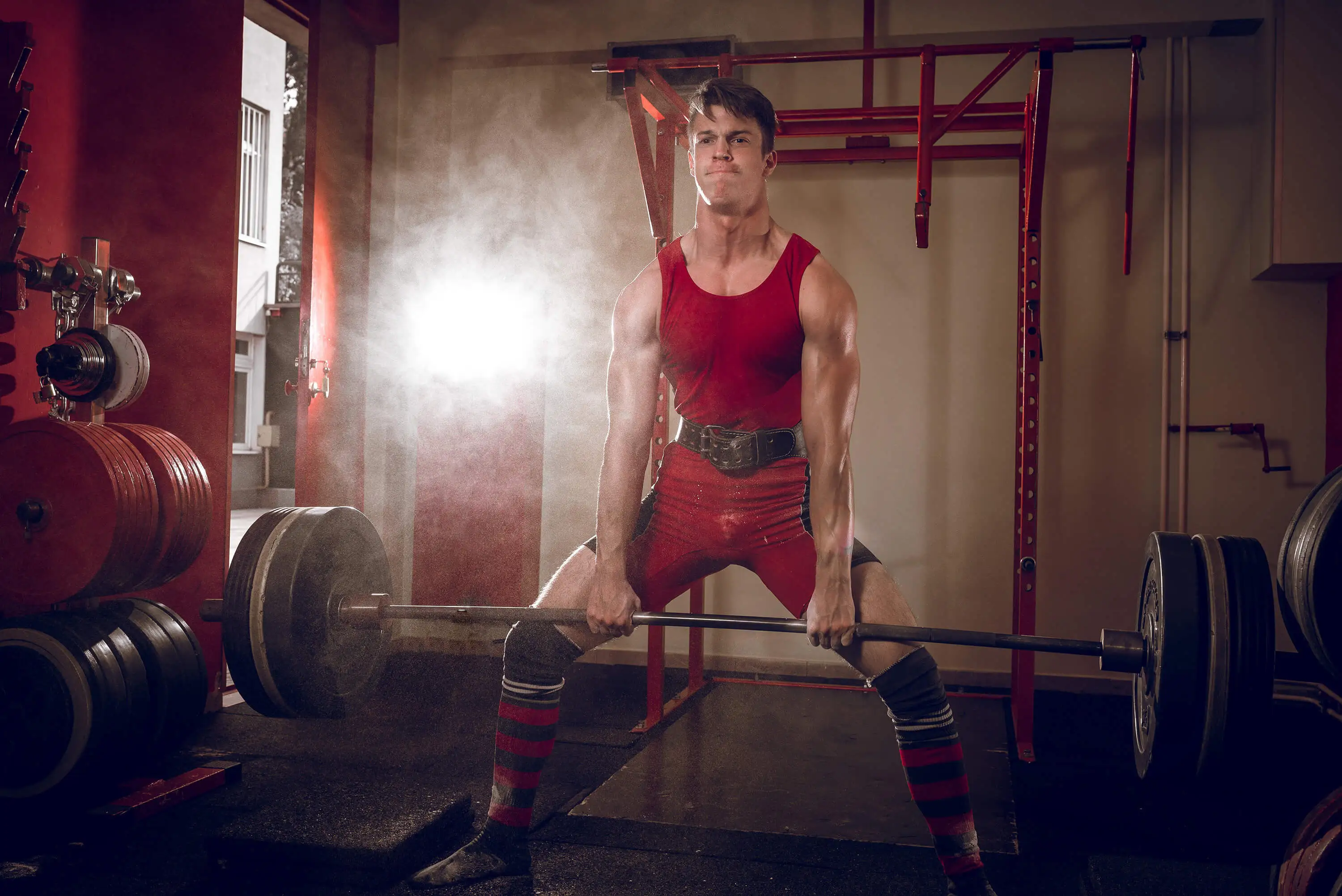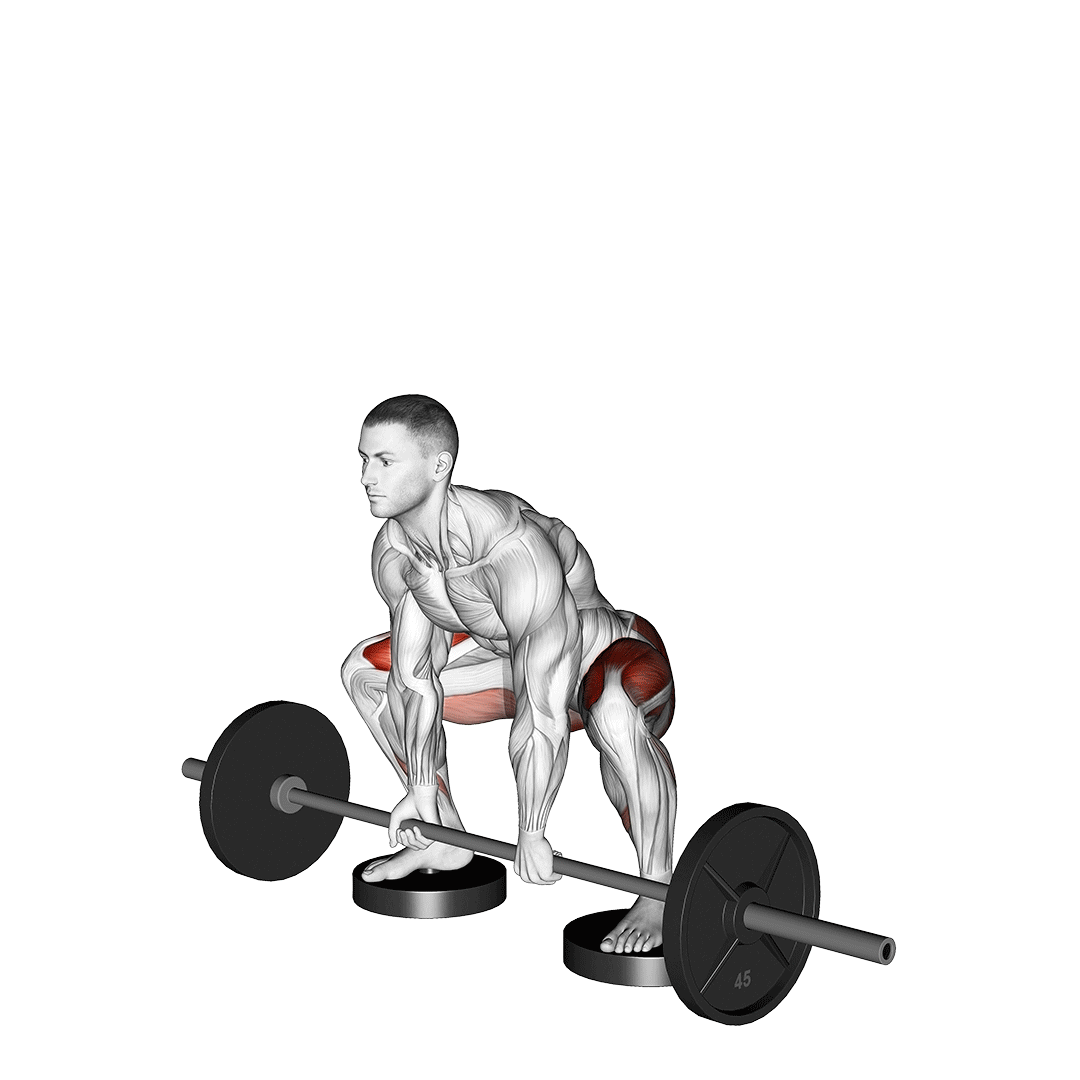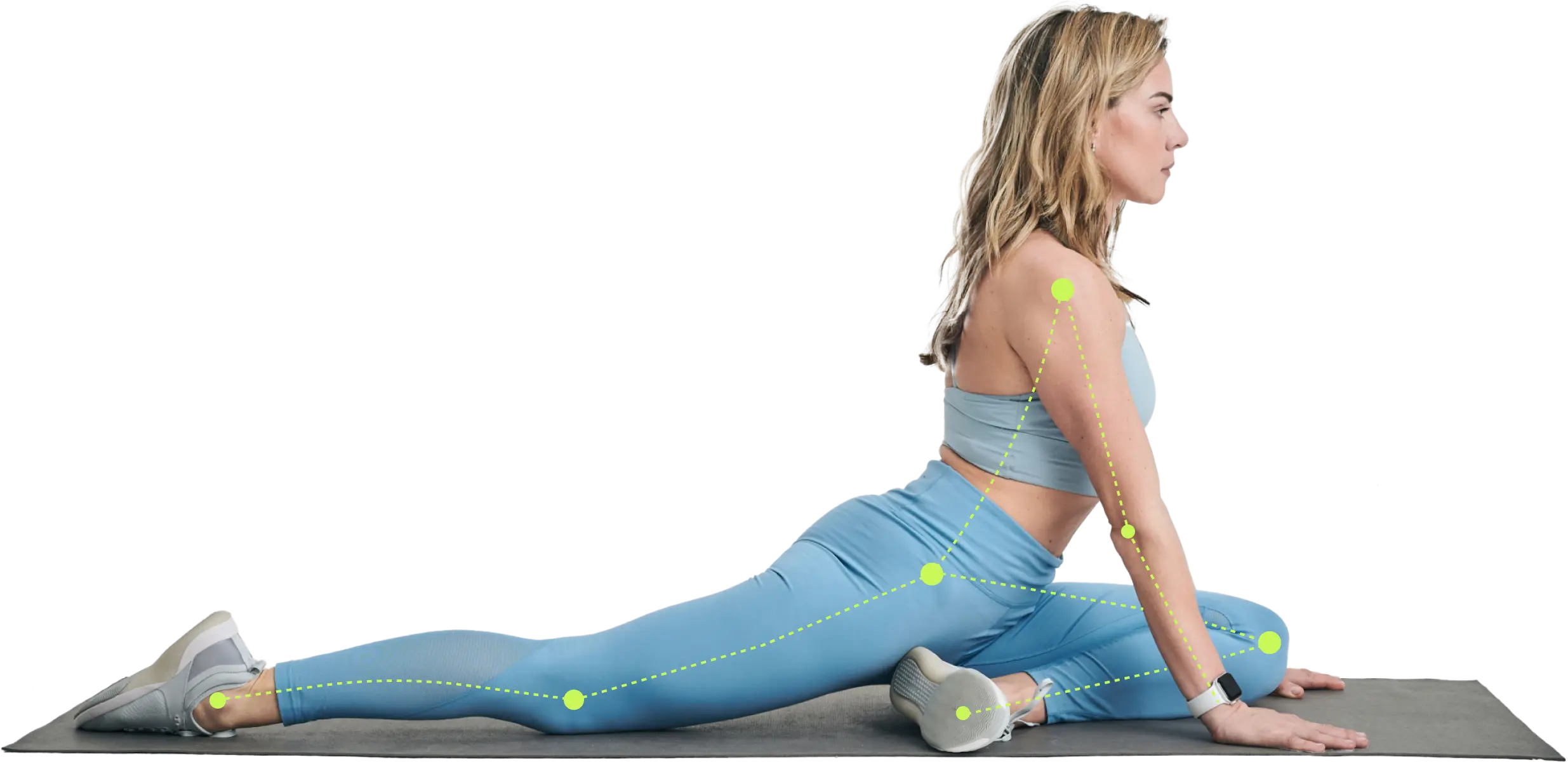Discover the benefits of deficit sumo deadlifts for improving range of motion and strength. Get insights on proper setup and execution for maximum gains.
![Optimizing the Deficit Sumo Deadlift [Enhance Technique]](/_next/image?url=https%3A%2F%2Fwww.zing.coach%2Flibrary%2Fdeficit-sumo-deadlift-preview.png&w=3840&q=75)
Sumo stance deadlifts are a hotly debated topic amongst weightlifters, as they allow you to lift heavier (some argue as much as 25%) than in conventional deadlifts due to the difference in range of motion from the wider stance. That’s all well and good, but what if you want to lift sumo without decreasing your range of motion? Enter the deficit sumo deadlift: a powerful barbell deadlift variation that combines the benefits of a sumo stance with the increased range of motion provided by a deficit. Let’s unpack what makes a deficit sumo deadlift a good choice for your next deadlift day and help you understand why this lift should be a part of your training regime
Deficit Sumo Deadlift – What Is It?
A deficit sumo deadlift involves doing a deadlift in a “sumo” stance while standing on a raised platform, such as a block or plate, to increase the range of motion required to lift the barbell. A “sumo” stance (yes, as in sumo wrestling!) means having your feet wide enough for your elbows to stay inside your knees when reaching for the bar.
If you’ve been lifting for a while, you probably know that deadlifting in sumo increases quad engagement. Now, however, it’s time for the special sauce: by starting the lift from a lower point, you’re extending the distance the bar must travel from the floor to the lockout position. That means you need to generate more power from the pull, which helps you work on weaknesses in the initial phase of your deadlifts and engages not just the quads but also the entire posterior chain more intensely. An added bonus? The deficit encourages better hip and hamstring flexibility, making it a neat addition for improving mobility.

Variations of the Deficit Sumo Deadlift
Deficit Sumo Pause Deadlift
One of the main benefits of doing a sumo deadlift with a deficit is that it improves your strength and technique at the bottom of the movement, the most challenging part of the lift for many people. So, why not double down? Turning it into a pause deadlift by adding a pause of 2-3 seconds just after you lift the bar from the floor increases the time you spend under tension on the initial pull from the ground. This improves your control throughout your deficit sumo deadlift and builds strength and stability at what many consider to be the most important part of the lift.
Sumo Deadlift with Kettlebells
Not a fan of barbell deadlifts, or don’t have one at hand? A kettlebell sumo deadlift offers a great alternative. The form is the same, except you hold one or two kettlebells in an overhand grip: double kettlebells can highlight any imbalances between your left and right sides, and a single is great for beginners to learn the correct form and stability before progressing to heavier weights. Plus, kettlebells are versatile, making them an ideal addition to your at-home exercise equipment.
Sumo Deficit Romanian Deadlift
Want more hamstring and glute activation? Try sumo deficit Romanian deadlifts. Stand on a 1-2 inch platform with a wide stance and grip the bar with a double overhand grip just outside your shoulders. Deadlift the bar into position at the top with hips and knees locked out. Push your hips back and hinge forward, lowering the bar until it's just below knee height while keeping a slight bend in your knees. Drive through your whole foot and focus on pushing the floor away to return to the starting position. Repeat for the desired number of repetitions, keeping your core engaged and spine neutral throughout.
How to Do the Deficit Sumo Deadlift
Follow these steps to master the fundamentals of the deficit sumo deadlift and maximize the benefits of this advanced variation.
Setup
- Find or build a stable platform that’s 1-2” off the ground.
- Start with lighter weights, 70-80% of your conventional sumo deadlift.
- Stand with feet wider than hip-width, toes pointed out.
- Position the bar over your midfoot.
- Hinge your hips back to lower your torso.
Drive
- Grab the barbell in an overhand or mixed grip, hands shoulder-width apart.
- Depress your scapulae to engage your lats, and brace your core.
- Tuck your chin to form a straight line from head to hips, spine neutral.
- Drive through your heels and legs to stand.
- Keep the bar close to your body.
Lockout
- Drive your hips forward.
- Keep your chest up and shoulders back.
- Extend your hips and knees without leaning back.
- Push your hips back and hinge your torso forward.
- Lower the bar with control.
Coach’s Tip: Practice holding an isometric hinge at the bottom position without weight for 30 seconds before adding weight.

Deficit Sumo Deadlift Benefits
- Lifters with longer torsos relative to their height may find sumo deadlifts better because the more upright torso position leverages their body mechanics more effectively – another reason it’s important to understand your body composition when lifting.
- Enhances hip and hamstring flexibility, allowing for better movement patterns in other exercises. Performing a flexibility test can help you gauge your progress and adjust your training accordingly.
- Targets quads and posterior chain muscles for greater leg drive and lower body strength.
- Causes less lower back strain on the compared to conventional deadlifts.
- Increases time under tension placed on the target muscles for more hypertrophy.
Deficit Sumo Deadlift - Common Mistakes
Throwing in a deficit to your sumo DLs adds a few new challenges and makes some common deadlift mistakes even harder to avoid. Here are a few do’s and don’ts to help you overcome the challenges of this lift:
- Don’t round your back on the way down, or you may strain your back. Do hinge at the hips and knees and maintain core stiffness.
- Don’t let the bar drift away from, as this strains your back, too. Do keep it as close to your body as possible throughout the lift.
- Don’t let your knees come too far forward during the descent or you’ll stress the joints. Do spread your toes and plant your feet to drive your knees back.
Tips on Integrating Deficit Sumo Deadlifts Into Your Training Program
Depending on your goals, there are a few ways you can include deficit sumo deadlifts in your strength training:
For Building Muscle
Perform four sets of 10-12 reps at moderate weight, with short rest intervals. High-rep deadlifts like this are ideal for hypertrophy and can help build muscle mass.
For Strength
Do five sets of five reps at about 80% of your one-rep max, with longer rest periods. This setup focuses on building maximum strength and power.
For Endurance
Try a 10-minute EMOM (every minute on the minute) with ten reps at about 50% of your one-rep max. This method enhances muscular endurance and cardiovascular fitness.
Coach’s Tip:
Mix deficit sumo deadlifts with other lower-body deadlift accessory exercises like squats and lunges to ensure balanced development.
Incorporating advanced lifts like the deficit sumo deadlift can significantly impact your fitness transformation and overall strength development. For personalized coaching and tailored workout plans, check out Zing Coach – your go-to resource for expert guidance and achieving your fitness goals.
FAQ
Authors
Medically reviewed
Andrea NardiTeacher and examiner in leading personal training academies, former professional athlete, coach of athletes and celebrities.
![Deciding to Squat or Deadlift First [Training Choices]](https://www.zing.coach/library/squat-or-deadlift-first-preview.jpg)
![Clean and Press vs Clean and Jerk Guide [Lift Breakdown]](https://www.zing.coach/library/clean-and-press-vs-clean-and-jerk-preview.jpg)
![High Rep Deadlifts for Growth [Increase Strength & Stamina]](https://www.zing.coach/library/high-rep-deadlifts-preview.jpg)
![Rack Pulls vs Deadlifts Compared [Strength Showdown]](https://www.zing.coach/library/rack-pulls-vs-deadlifts-preview.jpg)
![Trap Bar Deadlift vs Squat Comparison [Choosing Your Move]](https://www.zing.coach/library/trap-bar-deadlift-vs-squat-preview.jpg)
![Guide to Behind-the-Back Deadlifts [Technique & Benefits]](https://www.zing.coach/library/behind-the-back-deadlift-preview.webp)
![The Front Squat Hand Position Basics [Optimize Form]](https://www.zing.coach/library/the-front-squat-hand-position-basics-optimize-form-preview.png)
![Best Deadlift Accessories Reviewed [Boost Your Lift]](https://www.zing.coach/library/deadlift-accessories-preview.jpg)
![Mastering the Pause Deadlift [Elevate Your Training]](https://www.zing.coach/library/pause-deadlift-preview.jpg)
